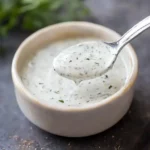A bright and flavorful twist on the classic tuna salad, these lemon dill tuna cakes are crispy on the outside, tender on the inside, and bursting with fresh flavors. They’re incredibly easy to make, perfect for a quick weeknight meal, and offer a healthier and more exciting way to enjoy canned tuna.
Ingredients:
- 2 (5-ounce) cans of tuna, packed in water or oil, drained very well and flaked
- 1/2 cup panko breadcrumbs, plus an additional 1/4 cup for coating
- 1/4 cup mayonnaise
- 1 large egg, lightly beaten
- 2 tablespoons fresh dill, finely chopped
- 1 tablespoon lemon zest, from about 1 large lemon
- 1 tablespoon lemon juice, freshly squeezed
- 1 teaspoon Dijon mustard
- 2 green onions (scallions), finely chopped (both white and green parts)
- 1/2 teaspoon salt, or to taste
- 1/4 teaspoon black pepper, freshly ground, or to taste
- 2-3 tablespoons olive oil or vegetable oil, for frying
Instructions:
Step 1: Prepare the Tuna:
- The most crucial step! Thoroughly drain the canned tuna. Excess moisture is the enemy of crispy tuna cakes. Press the tuna against the strainer to extract as much water as possible. Flake the tuna into a medium-sized mixing bowl using a fork. Ensure there are no large clumps.
Step 2: Combine Wet Ingredients and Seasonings:
- In a separate small bowl, whisk together the mayonnaise, beaten egg, fresh dill, lemon zest, lemon juice, Dijon mustard, chopped green onions, salt, and black pepper until well combined. This creates a flavorful base that will bind the tuna cakes together. Taste the mixture; this is your chance to adjust the seasoning before you commit to the whole batch.
Step 3: Mix with Tuna:
- Pour the wet ingredient mixture over the flaked tuna in the larger bowl. Add the 1/2 cup of panko breadcrumbs to the bowl. Gently fold all the ingredients together until just combined. Be careful not to overmix! Overmixing develops the gluten in the breadcrumbs, which can result in tough, rubbery tuna cakes. A light hand is key.
Step 4: Chill (Optional but Recommended):
- Cover the bowl with plastic wrap and refrigerate the tuna mixture for at least 15-30 minutes. This step is not strictly necessary, but it makes a world of difference. Chilling helps the flavors meld together, firms up the mixture, and makes the cakes much easier to shape and less likely to fall apart during cooking. If you’re in a rush, you can skip it, but I highly recommend taking the time.
Step 5: Shape the Cakes:
- Place the additional 1/4 cup of panko breadcrumbs on a shallow plate or pie dish. Remove the tuna mixture from the refrigerator. Scoop out about 1/4 cup of the mixture per cake (or your desired size) and form it into a patty, about 1/2 to 3/4 inch thick. You should get about 6-8 patties depending on their size. Use damp hands to help prevent the mixture from sticking to your fingers.
Step 6: Coat the Cakes:
- Gently press each patty into the panko breadcrumbs on the plate, ensuring both sides are lightly coated. The panko will create a crispy, golden-brown crust when fried. Press gently to ensure the crumbs adhere well.
Step 7: Cook the Tuna Cakes:
- Heat the olive oil or vegetable oil in a large non-stick skillet over medium heat. The oil should be hot enough that a breadcrumb sizzles when dropped in, but not smoking. Using a non-stick skillet is crucial for preventing the tuna cakes from sticking and falling apart.
- Carefully place the tuna cakes in the hot skillet, ensuring not to overcrowd the pan (cook in batches if necessary). Overcrowding will lower the temperature of the oil and result in soggy cakes.
- Cook for 3-5 minutes per side, or until golden brown and crispy, and heated through. Adjust the heat as necessary to prevent burning. Keep a close eye on them; they can brown quickly.
Step 8: Drain and Serve:
- Once cooked, transfer the tuna cakes to a plate lined with paper towels to absorb any excess oil. Serve warm with your favorite accompaniments.
Why You’ll Love This Recipe
- Quick and Easy: From start to finish, these tuna cakes come together in under 30 minutes (excluding optional chill time).
- Budget-Friendly: Canned tuna is an affordable pantry staple, making this a great meal for tight budgets.
- Versatile: Serve them as a light lunch, a quick dinner, or even as appetizers at a party.
- Flavorful: The combination of lemon, dill, and Dijon mustard elevates the humble tuna cake to a whole new level.
- Healthier Option: Baked rather than fried, or using tuna packed in water significantly reduces the fat content.
Serving Suggestions:
- As a Main Course: Serve with a side salad, roasted vegetables, or a creamy coleslaw.
- In a Sandwich: Tuck the tuna cakes into a toasted bun with lettuce, tomato, and a dollop of tartar sauce or aioli.
- As an Appetizer: Serve smaller tuna cakes with a lemon-dill dipping sauce.
- On Top of Greens: Crumble the tuna cakes over a bed of mixed greens for a protein-packed salad.
- With a Lemon Wedge: A simple lemon wedge adds a final burst of freshness.
Tips:
- Don’t Overmix: Overmixing the tuna mixture will result in tough cakes. Gently fold the ingredients together until just combined.
- Chill the Mixture: Chilling the tuna mixture for at least 15 minutes helps the cakes hold their shape and prevents them from falling apart during cooking.
- Use a Non-Stick Skillet: A non-stick skillet is essential for preventing the tuna cakes from sticking and burning.
- Don’t Overcrowd the Pan: Cook the tuna cakes in batches if necessary to avoid overcrowding the pan.
- Adjust Seasoning: Taste the tuna mixture before cooking and adjust the seasoning as needed.
Preparation & Cooking Time:
- Prep Time: Approximately 20 minutes (includes draining tuna, chopping ingredients, and mixing).
- Chill Time (Optional): 15-30 minutes.
- Cook Time: Approximately 8-10 minutes per batch.
- Total Time (excluding optional chill time): Around 30 minutes.
Nutritional Information:
- Calories: 280-350 kcal (This can vary based on tuna type, oil used for frying, and exact patty size.)
- Protein: High in protein, essential for muscle repair and growth, primarily from the tuna and egg.
- Omega-3 Fatty Acids: Tuna is a good source of these heart-healthy fats, particularly if using tuna packed in oil (though water-packed is often used for lower fat).
- Vitamin D: Tuna provides some Vitamin D, important for bone health and immune function.
- Sodium: Moderate sodium content, largely dependent on the canned tuna and added salt. Choose low-sodium tuna if this is a concern.
Conclusion
These Lemon Dill Tuna Cakes are a fantastic way to liven up your weeknight meals. They are quick, easy, and incredibly flavorful. Whether you serve them as a main course, in a sandwich, or as appetizers, they are sure to be a hit. So, grab a can of tuna, some fresh dill, and a lemon, and get cooking!
Q&A Section:
Q1: Can I use regular breadcrumbs instead of panko?
A1: While you can use regular breadcrumbs, panko breadcrumbs are highly recommended for their lighter and crispier texture. Regular breadcrumbs tend to absorb more oil and can result in a denser, less crispy crust. If you’re using regular breadcrumbs, you might want to reduce the amount slightly.
Q2: Can I bake these tuna cakes instead of frying them?
A2: Yes, absolutely! To bake the tuna cakes, preheat your oven to 375°F (190°C). Place the coated tuna cakes on a baking sheet lined with parchment paper. Lightly spray the tops with cooking oil. Bake for 15-20 minutes, flipping halfway through, until golden brown and heated through. Baking is a healthier option as it reduces the amount of oil used.
Q3: Can I make these tuna cakes ahead of time?
A3: Yes, you can! You can prepare the tuna mixture ahead of time, cover it tightly, and store it in the refrigerator for up to 24 hours. You can also shape and coat the tuna cakes and store them in the refrigerator for a few hours before cooking. Just be sure to cover them well to prevent them from drying out. It is best to cook them fresh for the best texture and flavour.
Q4: Can I freeze these tuna cakes?
A4: Yes, you can freeze cooked tuna cakes. Let them cool completely, then wrap them individually in plastic wrap and place them in a freezer bag. They can be stored in the freezer for up to 2-3 months. To reheat, thaw them overnight in the refrigerator and then bake or pan-fry them until heated through. Note that the texture might be slightly softer after freezing.
Q5: I don’t have fresh dill. Can I use dried dill instead?
A5: While fresh dill is preferred for its vibrant flavor, you can use dried dill as a substitute. Use about 1 teaspoon of dried dill for every 1 tablespoon of fresh dill. Keep in mind that dried herbs have a more concentrated flavor, so start with a smaller amount and adjust to taste.




